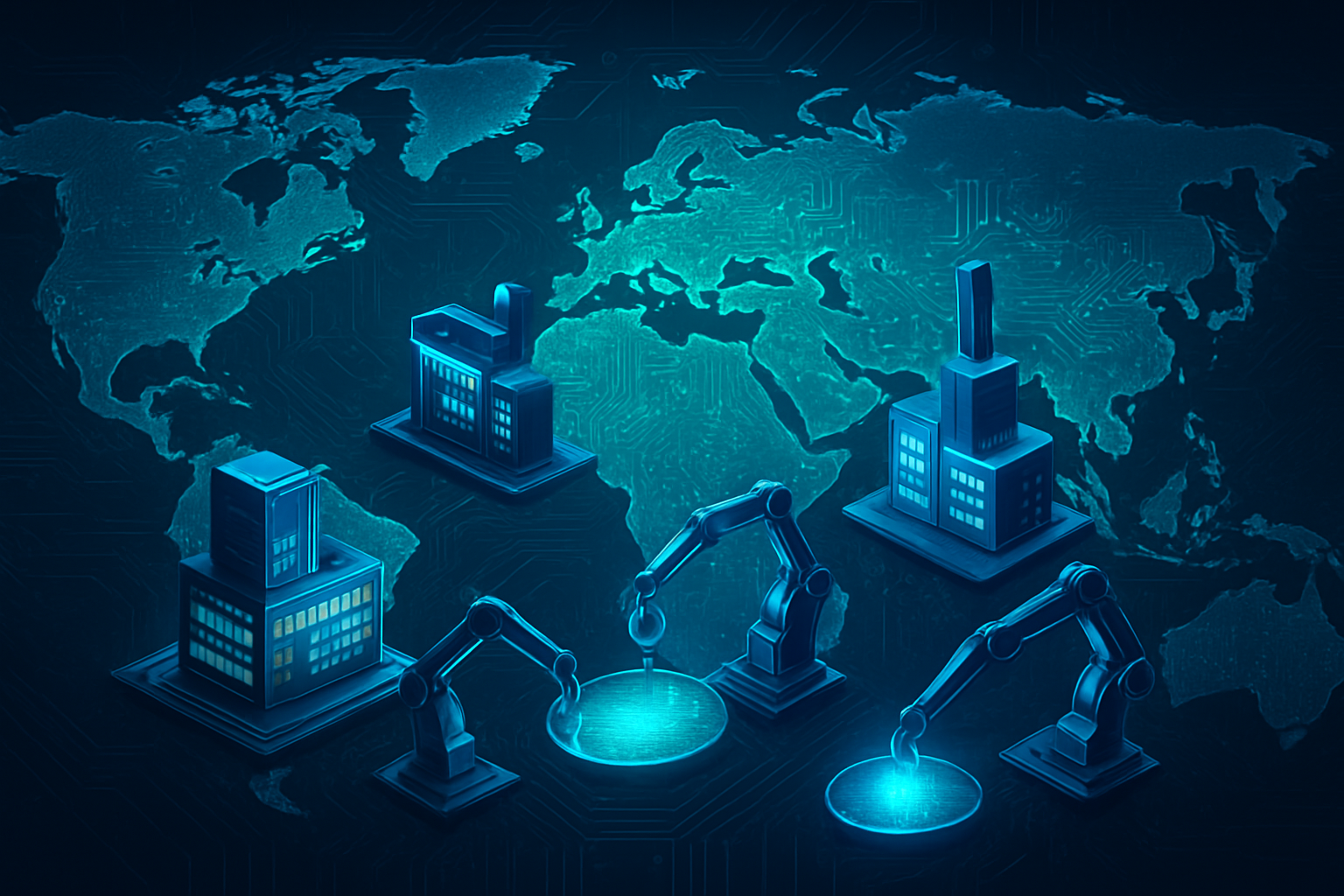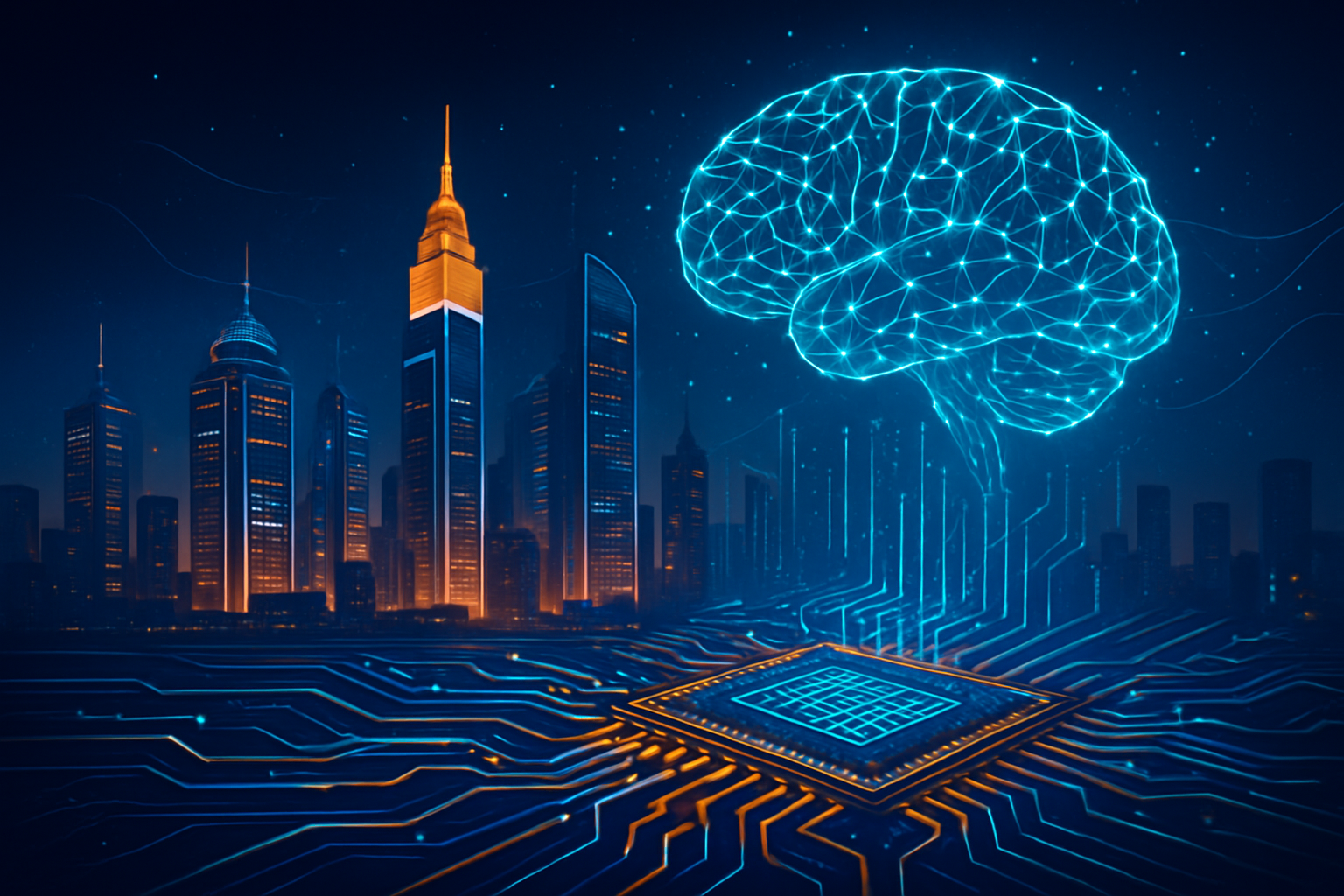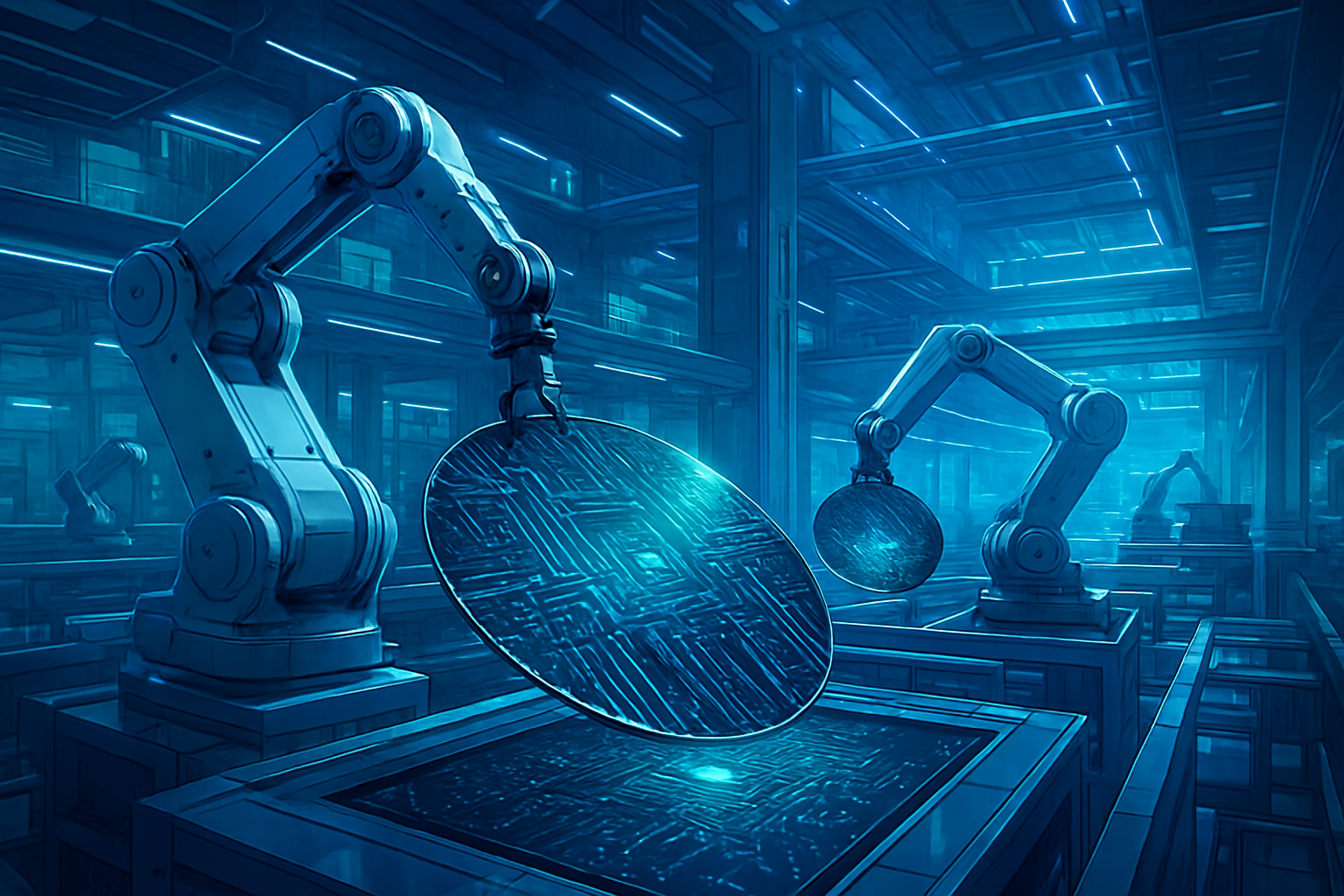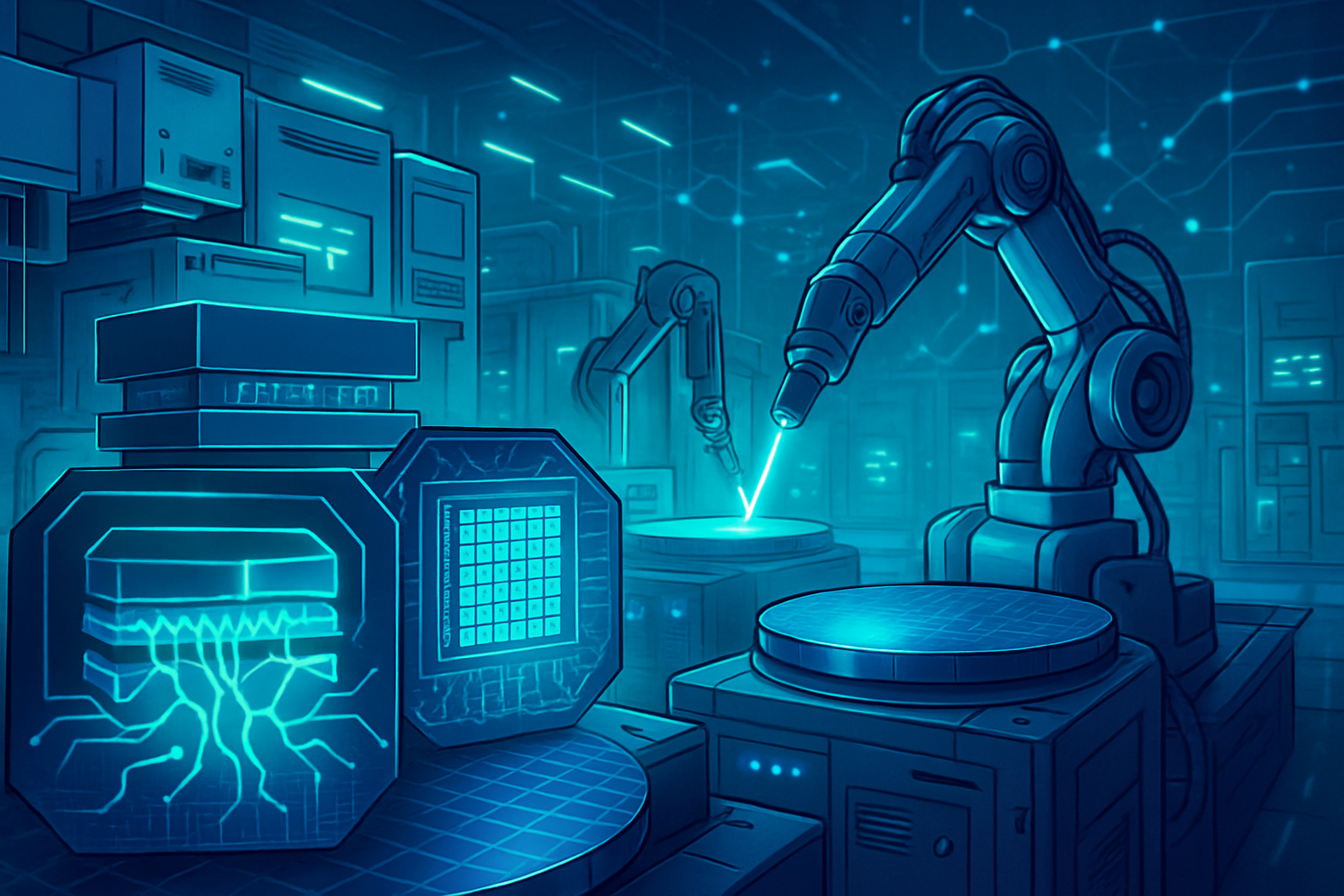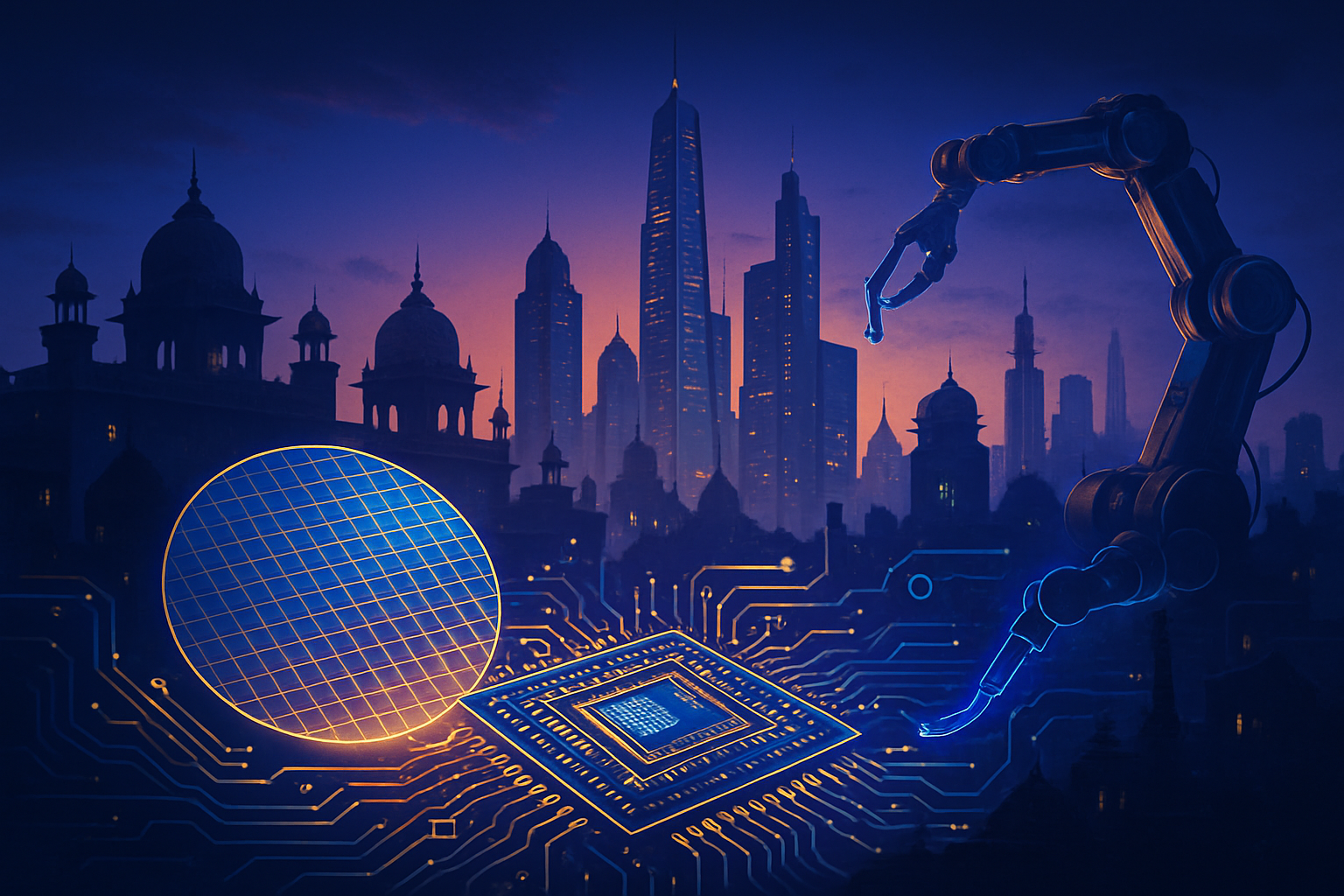The world is in the midst of an unprecedented global race to expand semiconductor foundry capacity, a strategic imperative driven by insatiable demand for advanced chips and profound geopolitical anxieties. As of November 2025, this monumental undertaking sees nations and tech titans pouring hundreds of billions into new fabrication plants (fabs) across continents, fundamentally reshaping the landscape of chip manufacturing. This aggressive expansion is not merely about meeting market needs; it's a high-stakes struggle for technological sovereignty, economic resilience, and national security in an increasingly digitized world.
This massive investment wave, spurred by recent supply chain disruptions and the escalating US-China tech rivalry, signals a decisive shift away from the concentrated manufacturing hubs of East Asia. The immediate significance of this global rebalancing is a more diversified, albeit more expensive, semiconductor supply chain, intensifying competition at the cutting edge of chip technology, and unprecedented government intervention shaping the future of the industry. The outcome of this silicon arms race will dictate which nations and companies lead the next era of technological innovation.
The Foundry Frontier: Billions Poured into Next-Gen Chip Production
The ambition behind the current wave of semiconductor foundry expansion is staggering, marked by colossal investments aimed at pushing the boundaries of chip technology and establishing geographically diverse manufacturing footprints. Leading the charge is TSMC (Taiwan Semiconductor Manufacturing Company, TWSE: 2330, NYSE: TSM), the undisputed global leader in contract chipmaking, with an expected capital expenditure between $34 billion and $38 billion for 2025 alone. Their global strategy includes constructing ten new factories by 2025, with seven in Taiwan focusing on advanced 2-nanometer (nm) production and advanced packaging. Crucially, TSMC is investing an astounding $165 billion in the United States, planning three new fabs, two advanced packaging facilities, and a major R&D center in Arizona. The first Arizona fab began mass production of 4nm chips in late 2024, with a second targeting 3nm and 2nm by 2027, and a third for A16 technology by 2028. Beyond the US, TSMC's footprint is expanding with a joint venture in Japan (JASM) that began 12nm production in late 2024, and a planned special process factory in Dresden, Germany, slated for production by late 2027.
Intel (NASDAQ: INTC) has aggressively re-entered the foundry business, launching Intel Foundry in February 2024 with the stated goal of becoming the world's second-largest foundry by 2030. Intel aims to regain process leadership with its Intel 18A technology in 2025, a critical step in its "five nodes in four years" plan. The company is a major beneficiary of the U.S. CHIPS Act, receiving up to $8.5 billion in direct funding and substantial investment tax credits for over $100 billion in qualified investments. Intel is expanding advanced packaging capabilities in New Mexico and planning new fab projects in Oregon. In contrast, Samsung Electronics (KRX: 005930) has notably reduced its foundry division's facility investment for 2025 to approximately $3.5 billion, focusing instead on converting existing 3nm lines to 2nm and installing a 1.4nm test line. Their long-term strategy includes a new semiconductor R&D complex in Giheung, with an R&D-dedicated line commencing operation in mid-2025.
Other significant players include GlobalFoundries (NASDAQ: GFS), which plans to invest $16 billion in its New York and Vermont facilities, supported by the U.S. CHIPS Act, and is also expanding its Dresden, Germany, facilities with a €1.1 billion investment. Micron Technology (NASDAQ: MU) is planning new DRAM fab projects in New York. This global push is expected to see the construction of 18 new fabrication plants in 2025 alone, with the Americas and Japan leading with four projects each. Technologically, the focus remains on sub-3nm nodes, with a fierce battle for 2nm process leadership emerging between TSMC, Intel, and Samsung. This differs significantly from previous cycles, where expansion was often driven solely by market demand, now heavily influenced by national strategic objectives and unprecedented government subsidies like the U.S. CHIPS Act and the EU Chips Act. Initial reactions from the AI research community and industry experts highlight both excitement over accelerated innovation and concerns over the immense costs and potential for oversupply in certain segments.
Reshaping the Competitive Landscape: Winners and Disruptors
The global race to expand semiconductor foundry capacity is profoundly reshaping the competitive landscape for AI companies, tech giants, and startups alike. Companies like Nvidia (NASDAQ: NVDA), Google (NASDAQ: GOOGL), Microsoft (NASDAQ: MSFT), and Amazon (NASDAQ: AMZN), all heavily reliant on advanced AI accelerators and high-performance computing (HPC) chips, stand to benefit immensely from increased and diversified foundry capacity. The ability to secure stable supplies of cutting-edge processors, manufactured in multiple geographies, will mitigate supply chain risks and enable these tech giants to accelerate their AI development and deployment strategies without bottlenecks. The intensified competition in advanced nodes, particularly between TSMC and Intel, could also lead to faster innovation and potentially more favorable pricing in the long run, benefiting those who design their own chips.
For major AI labs and tech companies, the competitive implications are significant. Those with robust design capabilities and strong relationships with multiple foundries will gain strategic advantages. Intel's aggressive re-entry into the foundry business, coupled with its "systems foundry" approach, offers a potential alternative to TSMC and Samsung, fostering a more competitive environment for custom chip manufacturing. This could disrupt existing product roadmaps for companies that have historically relied on a single foundry for their most advanced chips. Startups in the AI hardware space, which often struggle to secure foundry slots, might find more opportunities as overall capacity expands, though securing access to the most advanced nodes will likely remain a challenge without significant backing.
The potential disruption to existing products and services primarily revolves around supply chain stability. Companies that previously faced delays due to chip shortages, particularly in the automotive and consumer electronics sectors, are likely to see more resilient supply chains. This allows for more consistent product launches and reduced manufacturing downtime. From a market positioning perspective, nations and companies investing heavily in domestic or regional foundry capacity are aiming for strategic autonomy, reducing reliance on potentially volatile geopolitical regions. This shift could lead to a more regionalized tech ecosystem, where companies might prioritize suppliers with manufacturing bases in their home regions, impacting global market dynamics and fostering new strategic alliances.
Broader Significance: Geopolitics, Resilience, and the AI Future
This global push for semiconductor foundry expansion transcends mere industrial growth; it is a critical component of the broader AI landscape and a defining trend of the 21st century. At its core, this movement is a direct response to the vulnerabilities exposed during the COVID-19 pandemic, which highlighted the fragility of a highly concentrated global chip supply chain. Nations, particularly the United States, Europe, and Japan, now view domestic chip manufacturing as a matter of national security and economic sovereignty, essential for powering everything from advanced defense systems to next-generation AI infrastructure. The U.S. CHIPS and Science Act, allocating $280 billion, and the EU Chips Act, with its €43 billion initiative, are testament to this strategic imperative, aiming to reduce reliance on East Asian manufacturing hubs and diversify global production.
The geopolitical implications are profound. The intensifying US-China tech war, with its export controls and sanctions, has dramatically accelerated China's drive for semiconductor self-sufficiency. China aims for 50% self-sufficiency by 2025, instructing major carmakers to increase local chip procurement. While China's domestic equipment industry is making progress, significant challenges remain in advanced lithography. Conversely, the push for diversification by Western nations is an attempt to de-risk supply chains from potential geopolitical flashpoints, particularly concerning Taiwan, which currently produces the vast majority of the world's most advanced chips. This rebalancing acts as a buffer against future disruptions, whether from natural disasters or political tensions, and aims to secure access to critical components for future AI development.
Potential concerns include the immense cost of these expansions, with a single advanced fab costing $10 billion to $20 billion, and the significant operational challenges, including a global shortage of skilled labor. There's also the risk of oversupply in certain segments if demand projections don't materialize, though the insatiable appetite for AI-driven semiconductors currently mitigates this risk. This era of expansion draws comparisons to previous industrial revolutions, but with a unique twist: the product itself, the semiconductor, is the foundational technology for all future innovation, especially in AI. This makes the current investment cycle a critical milestone, shaping not just the tech industry, but global power dynamics for decades to come. The emphasis on both advanced nodes (for AI/HPC) and mature nodes (for automotive/IoT) reflects a comprehensive strategy to secure the entire semiconductor value chain.
The Road Ahead: Future Developments and Looming Challenges
Looking ahead, the global semiconductor foundry expansion is poised for several near-term and long-term developments. In the immediate future, we can expect to see the continued ramp-up of new fabs in the U.S., Japan, and Europe. TSMC's Arizona fabs will steadily increase production of 4nm, 3nm, and eventually 2nm chips, while Intel's 18A technology is expected to reach process leadership in 2025, intensifying the competition at the bleeding edge. Samsung will continue its focused development on 2nm and 1.4nm, with its R&D-dedicated line commencing operation in mid-2025. The coming months will also see further government incentives and partnerships, as nations double down on their strategies to secure domestic chip production and cultivate skilled workforces.
Potential applications and use cases on the horizon are vast, particularly for AI. More abundant and diverse sources of advanced chips will accelerate the development and deployment of next-generation AI models, autonomous systems, advanced robotics, and pervasive IoT devices. Industries from healthcare to finance will benefit from the increased processing power and reduced latency enabled by these chips. The focus on advanced packaging technologies, such as TSMC's CoWoS and SoIC, will also be crucial for integrating multiple chiplets into powerful, efficient AI accelerators. The vision of a truly global, resilient, and high-performance computing infrastructure hinges on the success of these ongoing expansions.
However, significant challenges remain. The escalating costs of fab construction and operation, particularly in higher-wage regions, could lead to higher chip prices, potentially impacting the affordability of advanced technologies. The global shortage of skilled engineers and technicians is a persistent hurdle, threatening to delay project timelines and hinder operational efficiency. Geopolitical tensions, particularly between the U.S. and China, will continue to influence investment decisions and technology transfer policies. Experts predict that while the diversification of the supply chain will improve resilience, it will also likely result in a more fragmented, and possibly more expensive, global semiconductor ecosystem. The next phase will involve not just building fabs, but successfully scaling production, innovating new materials and manufacturing processes, and nurturing a sustainable talent pipeline.
A New Era of Chip Sovereignty: Assessing the Long-Term Impact
The global race to expand semiconductor foundry capacity marks a pivotal moment in technological history, signifying a profound reordering of the industry and a re-evaluation of national strategic priorities. The key takeaway is a decisive shift from a highly concentrated, efficiency-driven manufacturing model to a more diversified, resilience-focused approach. This is driven by an unprecedented surge in demand for AI and high-performance computing chips, coupled with acute geopolitical concerns over supply chain vulnerabilities and technological sovereignty. Nations are no longer content to rely on distant shores for their most critical components, leading to an investment spree that will fundamentally alter the geography of chip production.
This development's significance in AI history cannot be overstated. Reliable access to advanced semiconductors is the lifeblood of AI innovation. By expanding capacity globally, the industry is laying the groundwork for an accelerated pace of AI development, enabling more powerful models, more sophisticated applications, and a broader integration of AI across all sectors. The intensified competition, particularly between Intel and TSMC in advanced nodes, promises to push the boundaries of chip performance even further. However, the long-term impact will also include higher manufacturing costs, a more complex global supply chain to manage, and the ongoing challenge of cultivating a skilled workforce capable of operating these highly advanced facilities.
In the coming weeks and months, observers should watch for further announcements regarding government subsidies and strategic partnerships, particularly in the U.S. and Europe, as these regions solidify their domestic manufacturing capabilities. The progress of construction and the initial production yields from new fabs will be critical indicators of success. Furthermore, the evolving dynamics of the US-China tech rivalry will continue to shape investment flows and technology access. This global silicon arms race is not just about building factories; it's about building the foundation for the next generation of technology and asserting national leadership in an AI-driven future. The stakes are immense, and the world is now fully engaged in this transformative endeavor.
This content is intended for informational purposes only and represents analysis of current AI developments.
TokenRing AI delivers enterprise-grade solutions for multi-agent AI workflow orchestration, AI-powered development tools, and seamless remote collaboration platforms.
For more information, visit https://www.tokenring.ai/.
